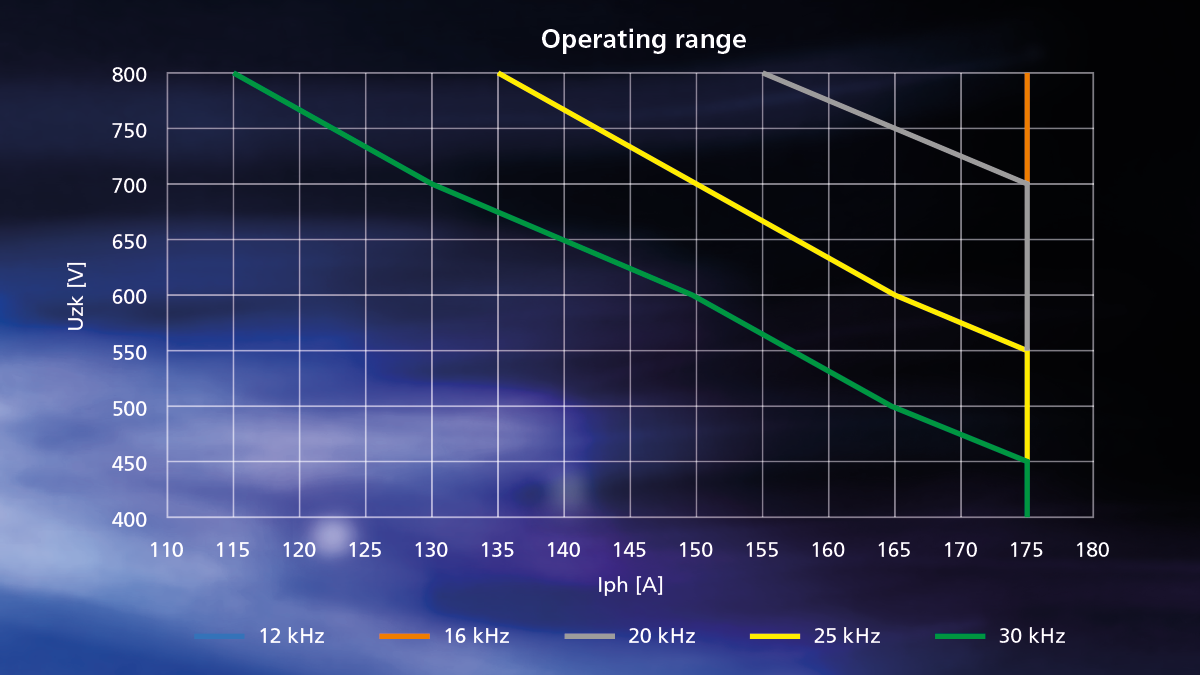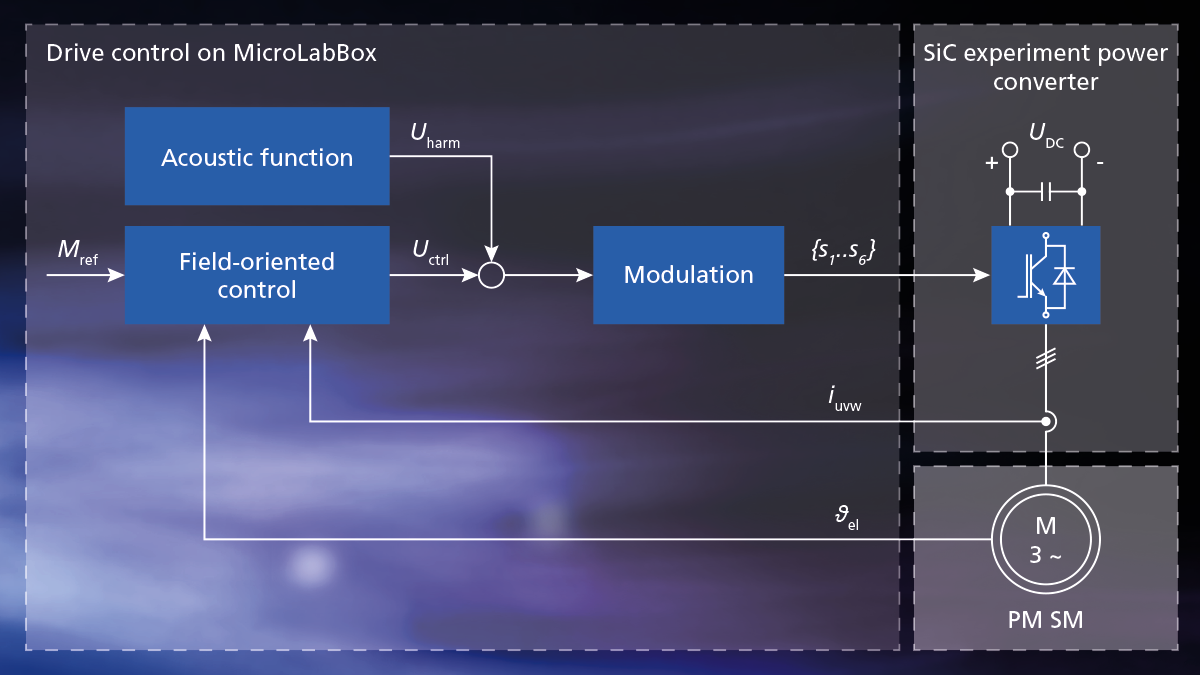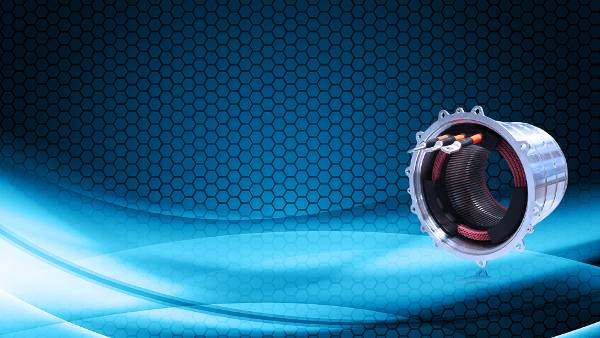As a megatrend in the automotive industry, electromobility is driving almost all vehicle manufacturers and suppliers to develop and test new electric drives. The primary objectives are high efficiency in the drive cycle and high torque or power density at low overall system costs. In addition, particularly strict limits must be complied with in terms of noise emissions (noise vibration harshness, NVH). For battery electric vehicles, mainly electric axles, which combine the electronic control unit (ECU), inverter, e-motor, and differential transmission, are being developed for the front and rear axles. For hybrid vehicles, the electric drive is mostly integrated into the transmission housing.
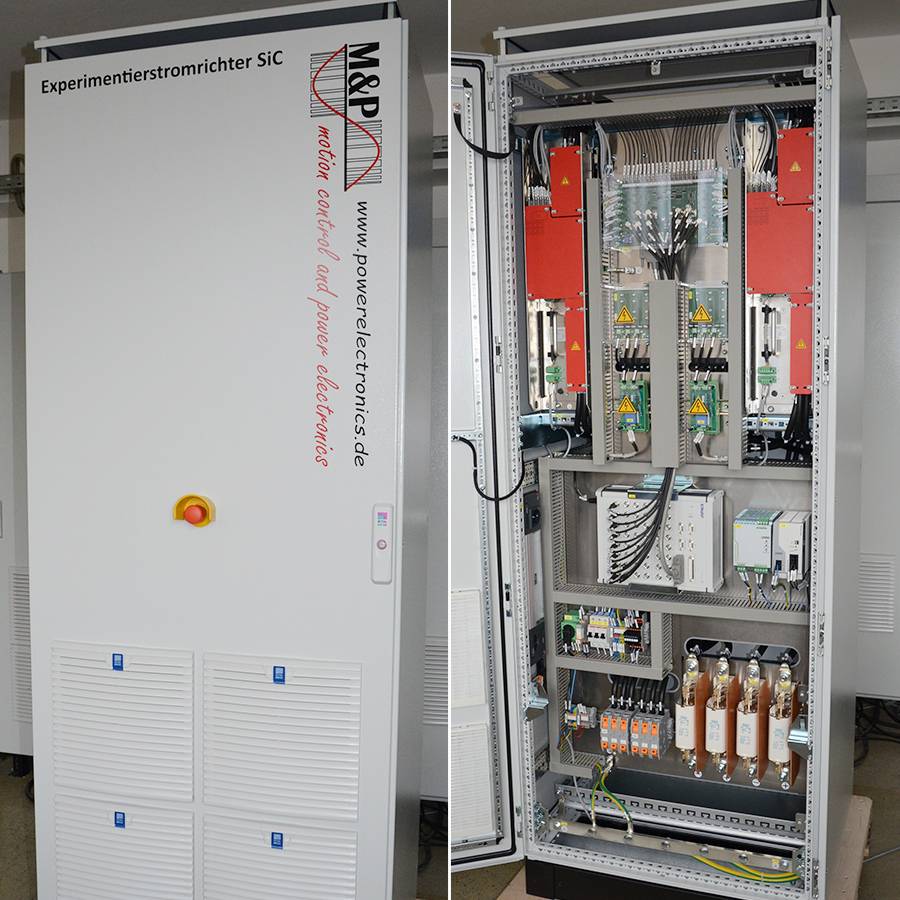
Virtual Design of the Drive
Various types of machines can be considered for vehicle propulsion: permanent magnet synchronous machines (PMSM), separately excited synchronous machines, synchronous reluctance machines, and asynchronous machines. Using analytical calculations and numerical simulations, all variants can be designed and compared virtually on the computer. However, for a rapid market launch, it is essential to put the prototypes to the test as early as possible. To test the e-machine or the complete e-axis in its housing as realistically as possible and to further optimize the software parameters, a rapid control prototyping system such as the dSPACE MicroLabBox can be coupled with a universal power electronics output stage. For this, the company M&P Motion Control and Power Electronics GmbH (M&P) has developed a new experiment power converter with silicone-carbide (SiC) components, which has a special interface to the MicroLabBox. The Fraunhofer IWU uses this converter to develop active processes for noise reduction and to test these on prototype vehicle drives. The field-oriented current control (FOC) intervenes to selectively cancel out disturbing tonal noise components of the drive.
Safe Operation of Electric Components with Real Currents and Voltages
The experiment power converter consists of two modules and, as a result of the various interfaces, allows two machines to be operated with a maximum of 175 A phase current or one machine with a maximum of 350 A phase current in parallel operation using a real-time system. The maximum switching frequency is 30 kHz, thanks to the SiC technology. With this, control, modulation, thermal models, etc., can be developed and tested in Simulink. Then they can be tested directly on the MicroLabBox with the SiC experiment power converter on the real drive system. This tool chain allows for a seamless transition between simulation and testing of the active noise-reducing software components.
The experiment power converter can be expanded with additional hardware, such as additional throttles or a net filter. This way, it can also be used for the following applications, in addition to drive systems:
- Mains simulation
- Feed-in (AC/DC in the mains)
- Battery simulation (DC/DC)
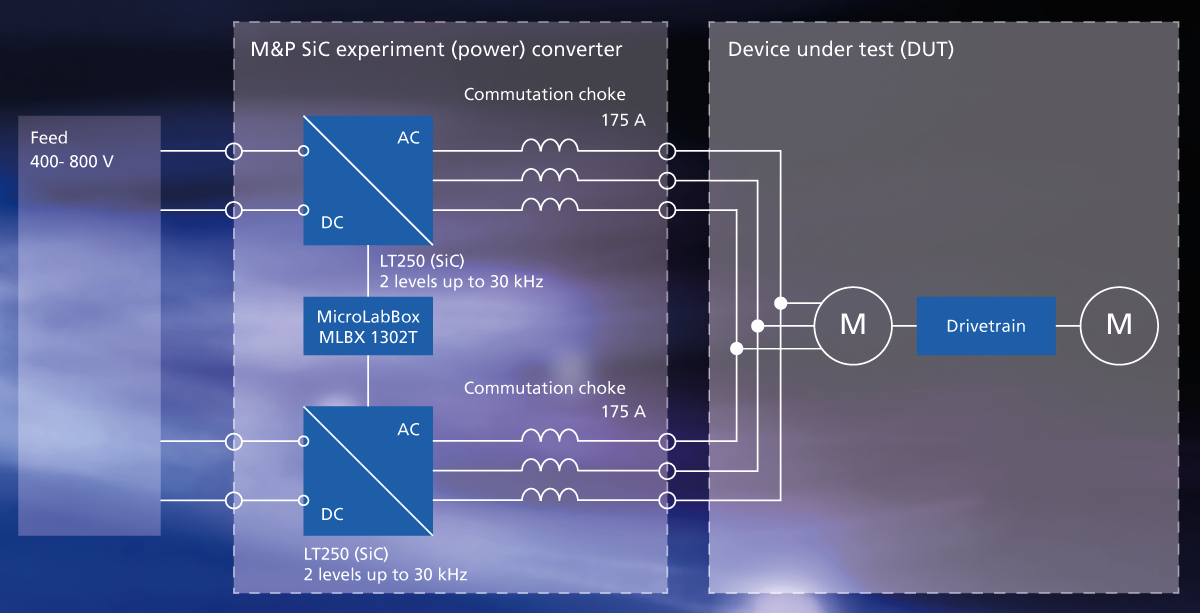
Setup of the SIC experiment power converter with power supply and unit under test. The unit under test consists of the drive machine, transmission, and load machine.
Electric Vehicle Drive Successfully Put into Operation
The first use of the system was the commissioning of a field-oriented control (FOC) for a vehicle drive with PMSM, including space vector modulation and active noise reduction, on the Fraunhofer IWU acoustic drive and transmission test bench (AGPS). This demonstrated that the acceleration noise level of the main motor on the housing in radial direction can be reduced by about 30 dB by active noise reduction, thereby reducing the combined noise level by about 5 dB. In particular, high-frequency tonal noise components of the electric drive, which are unpleasant for occupants of the vehicle and other road users, can be reduced very effectively using software.
How does the MicroLabBox perform on the test bench?
The MicroLabBox can be easily integrated into the test bench due to its compact design. It also has valuable electronic features which perfectly support its use with a test bench. These include:
- Relevant interfaces for the communication with various test bench components
- Fast updates of the controller software to quickly verify the effectiveness of the algorithms
- High-precision generation of pulse patterns
- High-precision evaluation of sensor signals
The combination of powerful processor, fast FPGA, and directly connected I/O provides the performance necessary for the high-precision injection of current harmonics (integer multiples of the fundamental frequency or AC current) at sampling rates of up to 33 µs.
A Service for the Automotive Industry
Thanks to the test bench, the IWU is able to perform detailed noise vibration harshness (NVH) analyses of drive systems. On customer requests, rule algorithms are developed and the influence of the acoustic system behavior is verified.
dSPACE MAGAZINE, PUBLISHED JUNE 2023
About the Authors:

Ludwig Schlegel
Ludwig Schlegel is the head of hardware development for power electronics at M&P in Dresden.

Dr. Thomas Windisch
Dr. Thomas Windisch is group manager for Powertrain Acoustics at the Fraunhofer Institute for Machine Tools and Forming Technology in Dresden.


